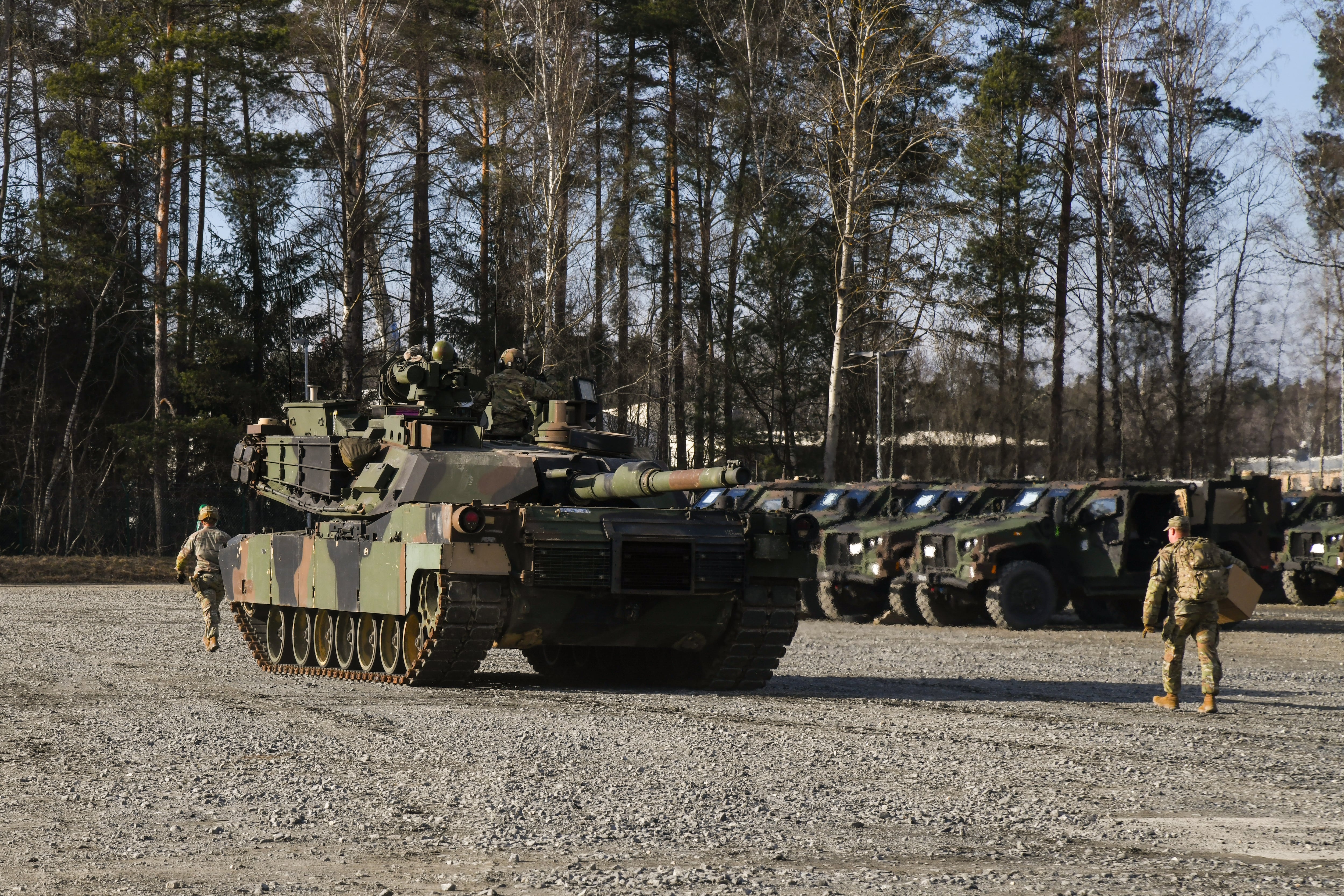It’s been five months since the U.S. military began mobilizing troops to central and eastern Europe in response to Russia’s build-up to and then invasion of Ukraine. What once looked like an inevitable toppling of Volodymyr Zelenskyy’s government has become a mostly contained battle for Ukraine’s Donbas region, but thousands of U.S. troops activated to back up NATO countries are still deployed, just in case.
Out of roughly 15,000 troops who mobilized around Europe earlier this year, more than 10,000 remain, including an Army armored brigade and pilots, maintainers and staff for dozens of fighter aircraft.
“In addition to President Biden’s announcement of additional long-term commitments to bolster European security at the NATO Summit in Madrid, [Defense Secretary Lloyd Austin] recently decided to extend or replace the majority of our ‘surge force’ in Europe,” Marine Lt. Col. Tony Semelroth, a Defense Department spokesman, told Military Times on July 21. “This decision ensures a robust deterrent and defensive posture alongside our Allies across the continent.”
Some units have gone home for good, according to numbers provided by U.S. Transportation Command. They include 1,000 members of the Germany-based 2nd Cavalry Regiment, who mobilized to Romania in March, as well as 800 paratroopers from the Italy-based 173 Airborne Brigade Combat Team, who spent time in Latvia.
After extending them in April, 150 members of the 82nd Airborne Division’s headquarters staff have returned to Fort Bragg, North Carolina, from Germany, to be replaced by the 101st Airborne Division, which the Pentagon announced in May.
Members of a KC-135 Stratotanker squadron from Fairchild Air Force Base, Washington, also returned home, as have members of Germany- and Greece-based AH-64 Apache battalions and headquarters staff from the XVIII Airborne Corps at Fort Bragg.
Those who remain are continuing to train with local forces in their host countries, as well as helping facilitate the transfer of equipment to Ukraine and training Ukrainian troops outside that country.
More details about how they’re spending their time have been scarce, as the Pentagon has put a moratorium on press engagements for the mission.
The current line-up includes:
- 500 soldiers from V Corps headquarters in Germany and Poland
- 1,500 soldiers from the 1st Infantry Division
- 3,400 soldiers from 1st Brigade Combat Team, 3rd Infantry Division, and their support units
- 315 soldiers from 3rd Battalion, 321st Field Artillery Regiment
- 235 soldiers from the 96th Transportation Company
- 250 soldiers from the 87th Division Sustainment Support Battalion and 8th Ordnance Company
- 200 Marines from Marine Air Control Group 28 in Lithuania
- Six F-16 Falcons from the 31st Fighter Wing in Romania
- Elements of the 5th Battalion, 7th Air Defense Artillery Regiment, in Poland and Slovakia
- Another 800 or so soldiers are spread around Romania, Bulgaria, Hungary and Slovakia
- 22 AH-64 Apaches and accompanying personnel from 7th Squadron, 17th Cavalry Regiment, in Poland
- 10 Marine Corps F/A-18s and their personnel in Poland
- 12 F-35 Lightning IIs in Germany
- Six Navy EA-18G Growlers in Germany
- Six F-22 Raptors from the 90th Fighter Squadron at Royal Air Force Lakenheath, United Kingdom, preparing to head to Poland
- The Harry S. Truman carrier strike group in 6th Fleet
That number is holding steady for now, according to the Pentagon.
RELATED

“We have no deployments or redeployments to announce at this time,” Semelroth said. “However, the United States will continue to adjust its posture as needed in response to the dynamic security environment.”
Pentagon officials in recent weeks have hesitated to forecast how the war in Ukraine will end, but have openly said that the laydown of troops in EUCOM is under heavy discussion.
Earlier this month, at the NATO summit in Madrid, Spain, President Joe Biden announced the U.S. would make the V Corps headquarters in Poland permanent, in addition to moving two F-35 squadrons to the U.K.
The new head of EUCOM told lawmakers during his confirmation hearing in June that he didn’t see a large plus-up of troops coming to Europe, but that he was open to ideas.
“I remain of the opinion ... that at least in the ground domain, this is not going to be a requirement for large additional forces, or additional forces,” said Gen. Christopher Cavoli.
He did see room for more temporary engagements, though.
“I think exercises and occasional presence, like we do with any ally, will increase,” Cavoli added.
Meghann Myers is the Pentagon bureau chief at Military Times. She covers operations, policy, personnel, leadership and other issues affecting service members.




